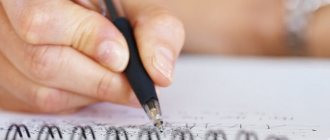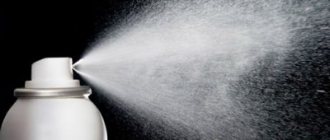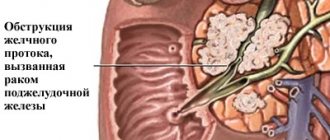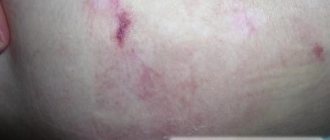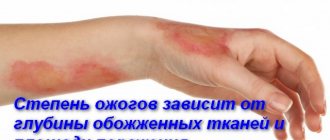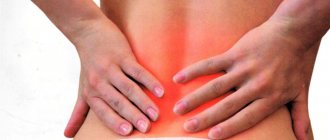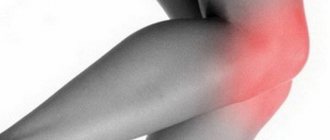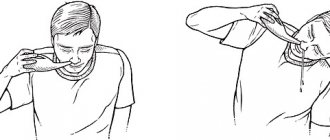If your wound healing is slow and takes too long, you will need to consult a surgeon who will explain the reasons for this phenomenon. You should also periodically visit a specialist so that he can change the treatment regimen in a timely manner.
What is required for home treatment:
- Clean oilcloth
- Hand sanitizers
- Hand soap
- Clean good towel
- Alcohol-containing solution for treatment around the wound, iodine, brilliant green, etc.
- Antiseptic aqueous solution, miramistin, hydrogen peroxide, furatsilin
- Be sure to buy tweezers and scissors, which must be treated with an antiseptic
- Medicines for treatment
- Material for dressing, that is, gauze and bandage, as well as means for fixing the bandage
Before dressing at home, you should wash your hands very thoroughly, wiping them with a clean special towel , then you need to lay out everything required for treatment on an oilcloth. Now you can remove the bandage from the wound and then wash your hands again after treating them with an alcohol solution; be sure to wear sterile gloves when treating the wound.
Now the napkin is removed to cover the wound, and if it is stuck, it is better to first moisten it with a solution of a regular antiseptic; the best option is hydrogen peroxide.
It’s bad to tear off the napkin right away, let it first soak thoroughly and thoroughly, and when the napkin is already removed, treat the area around the wound with an alcohol antiseptic.
When the napkin has already been removed from the wound, you should determine the condition of the wound itself , that is, whether it is wet or dry, and each time you should rationally check the healing process.
When the napkin and bandages are removed, it is necessary to use healing agents; gels and jelly are used for a wet wound, and a special ointment is used for a dry wound. Such treatments and dressings need to be done 1-2 times daily, preferably in the morning and then at the end of the day ; only high-quality products and effective cell growth stimulators should be used here.
Stages of treatment of open wounds
Treatment of open wounds in any case involves going through three stages - primary self-cleaning, inflammatory process and granulation tissue restoration.
Primary self-cleaning
As soon as a wound occurs and bleeding begins, the vessels begin to sharply narrow - this allows the formation of a platelet clot, which will stop the bleeding. Then the narrowed vessels expand sharply. The result of this “work” of blood vessels will be a slowdown in blood flow, increased permeability of the vessel walls and progressive swelling of soft tissues.
It was found that such a vascular reaction leads to the cleansing of damaged soft tissues without the use of any antiseptic agents.
Inflammatory process
This is the second stage of the wound process, which is characterized by increased swelling of the soft tissues, the skin becomes red. Together, bleeding and the inflammatory process provoke a significant increase in the number of leukocytes in the blood.
Tissue restoration by granulation
This stage of the wound process can also begin against the background of inflammation - there is nothing pathological about it. The formation of granulation tissue begins directly in the open wound, as well as along the edges of the open wound and on the surface of nearby epithelium.
Over time, granulation tissue degenerates into connective tissue, and this stage will be considered completed only after a stable scar has formed at the site of the open wound.
A distinction is made between healing of an open wound by primary and secondary intention. The first option for the development of the process is possible only if the wound is not extensive, its edges are brought close to each other and there is no pronounced inflammation at the site of damage. And secondary intention occurs in all other cases, including with purulent wounds.
Features of the treatment of open wounds depend only on how intensively the inflammatory process develops and how badly the tissue is damaged. The task of doctors is to stimulate and control all of the above stages of the wound process.
Possible complications
Complications arise if first aid for a cut finger is not provided correctly. The most common complications include:
- Numbness of the finger. It is necessary to contact a neurologist or vascular surgeon. Most likely, the nerve that is responsible for sensitivity is damaged and will need to be stitched.
- Scarlet blood flows out of the wound in spurts. The artery that supplies the finger with blood is damaged. You need to bandage the finger tightly above the affected area. This will close the blood vessel and stop the bleeding. The hand should be raised as high as possible.
- The edges of the damage are constantly moving apart. It looks like the cut is too deep and too wide. You will have to stitch it up, otherwise healing will be long and tedious, and the scar will be large and ugly. A visit to the surgeon is required.
- Infection of a cut. If, some time after the cut, the pain intensified, the finger turned red, and pus ran out of the wound, it means that it was not possible to prevent the infection. You will have to go to a surgeon who will clean the wound and prescribe an antibiotic.
A complication of incorrectly provided medical care for a cut is that the wound bleeds.
Primary treatment in the treatment of open wounds
Before the victim seeks professional medical help, he must thoroughly wash the wound with antiseptic agents - this will ensure complete disinfection of the open wound. To minimize the risk of wound infection during treatment, hydrogen peroxide, furatsilin, a solution of potassium permanganate or chlorhexidine should be used. The skin around the wound is treated with brilliant green or iodine - this will prevent the spread of infection and inflammation. After the described treatment, a sterile bandage is applied on top of the open wound.
The speed of its healing depends on how correctly the initial cleaning of the open wound was carried out. If a patient comes to the surgeon with punctured, cut, lacerated open wounds, then he must undergo specific surgical treatment. Such deep cleaning of the wound from dead tissue and cells will speed up the healing process.
As part of the initial treatment of an open wound, the surgeon removes foreign bodies, blood clots, and excises uneven edges and crushed tissue. Only after this the doctor will apply sutures, which will bring the edges of the open wound closer together, but if the gaping wound is too extensive, then the sutures are applied a little later, when the edges begin to recover and the wound begins to heal. Be sure to apply a sterile bandage to the site of injury after such treatment.
Please note: in most cases, a patient with an open wound is given anti-tetanus serum, and if the wound was caused by an animal bite, a rabies vaccine.
The entire described process of treating an open wound reduces the risk of infection and the development of complications (sepsis, gangrene, suppuration), and accelerates the healing process. If the treatment was carried out on the first day after receiving the injury, then no complications or serious consequences are expected.
Assisting with a deep cut on a finger
Initially, you need to determine the intensity of bleeding. If the blood pulsates or gushes in a constant stream, it means that a vessel much larger than the capillary has been affected.
Deep cut on finger with knife.
It is necessary to stop the bleeding as quickly as possible. To do this, apply a tourniquet or rubber band to the finger above the cut site. It drags on exactly until the blood stops, no more. It is better to record the time when the tourniquet was applied. Every 30-40 minutes it is necessary to loosen the tourniquet to avoid the death of tissues to which blood access was limited.
If the bleeding is light, it is recommended to allow some blood to drain out. This way, it will wash away dirt and foreign objects from the wound.
The second step is to wash the wound. After the wound is washed using a bandage or bactericidal patch, it is necessary to apply a tight bandage. After this, the victim should be immediately taken to the hospital or an ambulance should be called.
When in a deep cut there is a noticeable layer of fat (yellowish lumpy tissue), bone (hard surface with a white tint) or muscle (veiny tissue of a dark red color), or the wound has disintegrated quite strongly to the sides, torn edges are visible, then the patient urgently needs suturing operation.
How to treat a weeping open wound
If there is an excessive amount of serous-fibrous exudate in an open wound, then surgeons will take measures to treat the open, weeping wound. In general, such abundant discharge has a beneficial effect on the healing rate - it additionally cleanses the open wound, but at the same time, the task of specialists is to reduce the amount of exudate - this will improve blood circulation in the smallest vessels (capillaries).
When treating weeping open wounds, it is important to change sterile dressings frequently. And during this procedure, it is important to use a solution of furatsilin or sodium hypochloride, or treat the wound with liquid antiseptics (miramistin, okomistin and others).
To reduce the amount of serous-fibrous exudate released, surgeons use dressings with a 10% aqueous solution of sodium chloride. With this treatment, the bandage must be changed at least once every 4-5 hours.
A weeping open wound can also be treated with the use of antimicrobial ointments - the most effective are streptocidal ointment, Mafenide, Streptonitol, Fudizin gel. They are applied either under a sterile bandage or on a tampon, which is used to treat an open, weeping wound.
Xeroform or Baneocin powder is used as a drying agent - they have antimicrobial, antibacterial, and anti-inflammatory properties.
Healing time for incised wounds
The healing time for superficial and deep cuts is different. If a superficial cut heals within 3 days, then deep wounds heal from 15 to 25 days. How long a deep finger cut takes to heal depends on a number of factors:
- Depth of damage;
- General condition of the body. In weakened people, even minor wounds take a long time to heal.
- Nutrition. It must be complete in order for the necessary collagen to be produced;
- Diabetes mellitus, in which healing takes a long time and is often complicated and infected.
- The intensity of blood supply to damaged tissues. The more intense the blood supply, the faster the recovery.
- Patient's age. The younger a person is, the more active the processes of soft tissue regeneration occur.
How to treat an open purulent wound
It is an open purulent wound that is most difficult to treat - purulent exudate must not be allowed to spread to healthy tissue. To do this, a regular dressing turns into a mini-operation - with each treatment, it is necessary to remove accumulated pus from the wound; most often, drainage systems are installed so that the pus is provided with a constant outflow. Each treatment, in addition to the specified additional measures, is accompanied by the introduction of antibacterial solutions into the wound - for example, Dimexide. To stop the necrotic process in an open wound and remove pus from it, specific agents are used in surgery - Trypsin or Himopsin powders. A suspension is prepared from these powders by mixing them with novocaine and/or sodium chloride, and then sterile napkins are impregnated with the resulting product and tucked directly into the cavity of an open purulent wound. In this case, the bandage is changed once a day; in some cases, medicated wipes can be left in the wound for two days. If a purulent open wound has a deep and wide cavity, then these powders are poured directly into the wound, without the use of sterile wipes.
In addition to such thorough surgical treatment of an open purulent wound, the patient must be prescribed antibacterial drugs (antibiotics) orally or by injection.
Features of the treatment of purulent open wounds:
- After cleaning the open wound from pus, Levosin ointment is injected directly into the cavity. This drug has antibacterial, anti-inflammatory, and analgesic effects.
- For medicinal dressings when treating an open wound with purulent contents, Levomikol ointment and Sintomycin liniment can be used.
- Baneocin ointment will be most effective in the treatment of open wounds with identified Staphylococcus aureus, Nitacid ointment - in the treatment of wounds with diagnosed anaerobic bacteria, Dioxidine ointment is generally a universal remedy - effective against most types of infections, including against Pseudomonas aeruginosa and gangrene pathogens.
- Most often, when treating open purulent wounds, surgeons use ointments based on polyethylene oxide; modern medicine refuses Vaseline/lanolin in this case.
- Vishnevsky ointment is an excellent way to get rid of pus in an open wound - it both resolves infiltrates and increases blood flow in the wound. This medicine is applied directly to the wound cavity 1-2 times a day.
- When treating a patient with an open purulent wound in a medical institution, immunotherapy and detoxification therapy are necessarily prescribed.
- Ultrasound or liquid nitrogen may be used in the hospital to speed up the wound healing process.
For burns
If the burn is thermal, cool the injured area with a stream of cold water, frozen meat from the refrigerator, or a piece of ice wrapped in a thin towel around the ice or meat. Cooling should last at least 15 minutes.
To prevent infection, apply a dry, loose, sterile bandage to the burned area. In this case, under no circumstances should you use powders and ointments (especially fat-based ones). Under them, the temperature of the burned tissues will decrease much more slowly. It is very dangerous to lubricate the burn with alcohol or cologne - you will cause a painful shock.
In case of a chemical burn, the affected area should be washed with plenty of water. By washing away the chemical, it reduces its concentration. If an acid or alkali (for example, caustic soda, quicklime) gets on the skin through clothing, then you must first wash it off, and then carefully cut it and remove wet clothes from the victim.
In case of an alkali burn, a sterile piece of bandage or gauze is moistened with a solution of boric acid (a teaspoon in a glass of water) or a weak (slightly acidic) solution of vinegar and applied to the burn site.
In cases where the burn is caused by acids, the gauze is soaked in a solution of baking soda (a teaspoon per glass of water).
Without getting up from the couch. What injuries are easy to get at home? Read more
Creams and ointments for treating wounds at home
If the damage is minor and there is no large cavity, then such open wounds can be treated at home using various ointments. What experts recommend using:
Salicylic ointment. This product belongs to the antibacterial category. First you need to treat the wound with hydrogen peroxide, then apply Salicylic ointment directly to the wound and cover everything with a sterile bandage. Ichthyol ointment can be used in the same way.
- Streptocide. This remedy is used only for superficial damage. If you have Streptocide tablets in your medicine cabinet, you need to crush them and cover the wound. Many people use special medical glue BF for superficial wounds, but this is wrong - treatment with this drug is a mandatory procedure.
- Balm Rescuer. When it is applied to a wound, a thin film is formed, so doctors remind you that before using this balm, you must wash the open wound with hydrogen peroxide.
- Solcoseryl. It is available in the form of an ointment - it is applied to a dry open wound, and in the form of a jelly - used in the treatment of weeping open wounds.
- Heparin ointment, Troxevasin ointment, Dolobene gel. Used in the presence of a bruise or extensive hematoma at the site of an open wound. Applied directly to the skin, it quickly relieves swelling and hyperemic areas.
- Cream Eplan. It is made on the basis of polyethylene glycols and has antibacterial and disinfectant properties. The use of this product significantly reduces the risk of infection of open wounds.
Signs
An open wound is a violation of the integrity of the skin and internal tissues. Lack of timely treatment leads to the following consequences:
- excessive blood loss, anemia;
- if organs or muscles are affected, there is a risk of complications during subsequent treatment;
- being in a state of shock for people who have been injured;
- blood poisoning.
Signs:
- pain;
- bleeding;
- soft tissue disorder;
- dysfunction of the limbs as a result of an open wound on the leg or a wound on the arm.
Folk remedies for treating open wounds
If the wound is not widespread and deep, then some folk remedies can be used to speed up its healing. The most popular, safe and effective include:
- aqueous solution of propolis - excellent for weeping open wounds;
- a decoction based on chamomile flowers, eucalyptus leaves, garden raspberry branches, calendula flowers, St. John's wort, heather, elecampane, yarrow, calamus root and comfrey;
- a remedy made from aloe juice, sea buckthorn oil and rosehip oil (all mixed in equal proportions) - effective in the treatment of shallow open and dry wounds.
Please note: before using folk remedies to treat open wounds, you must make sure that the victim is not allergic to any of these medicinal plants.
It is best to entrust the treatment of open wounds to professionals - surgeons will be able to timely determine the onset of the development of the infectious process and select effective treatment. If you decide to do therapy at home, you must carefully monitor the condition of the victim. If you experience elevated body temperature or pain at the site of injury of unknown etiology, you must urgently seek professional medical help - it is quite possible that a dangerous infectious process is progressing in the wound.
Tsygankova Yana Aleksandrovna, medical observer, therapist of the highest qualification category
89, total, today
( 206 votes, average: 4.70 out of 5)
Hypertensive crisis: symptoms and first aid
Perimaxillary phlegmon: symptoms and treatment
Related Posts
What types of wounds and abrasions are there?
Most often in everyday life we encounter cuts and abrasions.
An abrasion is formed by mechanical friction against a hard, rough, rough surface. This happens, for example, when you fall on a gravel or asphalt road.
Abrasions may be superficial, affecting only the epidermis. The skin at the site of injury turns red and swells. With deeper abrasions, small capillaries are damaged, droplets of blood appear on the surface of the damaged skin (pinpoint bleeding) and, most importantly, severe pain occurs.
When a cut occurs - a shallow cut wound - either only the skin is damaged, or the subcutaneous fatty tissue is also affected. When a cut occurs, bleeding occurs, the intensity of which depends on the depth of the wound and how many vessels are damaged.
The wounds can be deep, with damage to large vessels, with severe bleeding, accompanied by bruises and bruises. Foreign objects, dirt, and earth can get into them.
Types of wounds on the leg
Trauma occurs under the influence of external and internal factors. Internal – unfavorable processes occurring in the body during illness: diabetes, cancer, gangrene due to blockage of blood vessels in the legs, especially in the elderly.
External factors causing open injuries requiring treatment:
- surgical operations - removal of warts, moles, nails or deep surgical interventions during which the cut had to be sutured;
- damage with a sharp object: a cut wound or a deep penetrating wound that goes deep into the tissue - a puncture;
- laceration of a limb - often occurs if you fall, accompanied by acute pain and large blood loss;
- contusion injury - occurs from a blow with a blunt object or a fall. Accompanied by hematoma;
- chopped - occurs under the influence of an ax;
- crushing – a strong blow that causes damage to the skin and tissues of the leg;
- removal of a scalp or flap of skin - occurs under the influence of a sharp object or strong friction - falling from a motorcycle at speed. Such injuries require surgical treatment due to the large area of detached skin;
- burns;
- calluses;
- festering wound - it begins to become inflamed due to hormonal and immune disorders, poor hygiene, improper treatment, leading to the accumulation of a large number of bacteria, especially in a humid environment;
- allergic reaction - poisonous animals, insects can bite and introduce an allergen or poison.
Damage to the integrity of the skin on the leg often provokes an inflammatory reaction.
Types of cuts
There are several types of cuts:
- Cuts caused by blunt objects are characterized by ragged edges of the wound and can be combined with bruises and flattening of soft tissues, which complicates treatment.
- Wounds from sharp objects have smooth edges, which makes healing easier. However, sharp objects often cause deep cuts, which can affect, in addition to the skin with small capillaries, large vessels, ligaments and even bones.
- Another type of injury is a puncture rather than a cut. They can also be applied with sharp, thin objects. Treatment of such cuts and punctures is complicated by the fact that the wound channel is usually narrow and deep. The finger quickly swells, but the blood does not stop, it soaks into the tissue around it, because of this, the wound quickly rots, and the finger begins to break out. Such cuts are characterized by blueness of the finger.
- Often the finger is not just cut, but part of the flesh is cut off. In this case, it is extremely important to protect the wound from pathogenic microorganisms, since the open area is much larger than with a regular cut.
Important
Extensive and deep burns sometimes lead to burn disease. In this case, there is a weakening of the heart’s activity, dysfunction of the kidneys, liver, and all types of metabolism in the body. The victim's pulse quickens, body temperature rises, appetite disappears, and sometimes vomits. Severe, extensive burns are dangerous because they can cause shock - a sharp depression of the vital functions of the body, sometimes leading to a tragic outcome.
Such a patient requires maximum rest and prompt medical attention. All you can do in this case is to give him 15-20 drops of valerian tincture, wrap him in a clean sheet and wait for the ambulance to arrive.
Causes of suppuration
Favorable conditions are considered to be the main reason for the development of the process:
- extensive, deep skin lesions;
- contamination of the wound with foreign bodies;
- exhaustion;
- diabetes;
- contact with damaged skin areas of staphylococci, streptococci, and E. coli.
Sometimes wounds become infected with anaerobes, pneumococci, mycobacteria, and salmonella.
SOS!
You should definitely seek medical help if:
- when a cut occurs, severe bleeding is observed, accompanied by large loss of blood;
- an additional pressure bandage quickly becomes saturated with blood;
- the wound was caused by an animal or human bite;
- the length of the cut is more than 2 cm, the wound is deep, its edges have separated - you will have to put stitches;
- the wound is contaminated, and the person has not previously been vaccinated against tetanus or was vaccinated more than 5 years ago;
- the cut or abrasion is located in the head area, and this is accompanied by nausea and vomiting.
By the way,
bandage a scratch or a small abrasion only when it is necessary to stop the bleeding or prevent the area from being injured again. An open scratch (abrasion) usually heals faster.
Causes of cuts on the palm
There are many reasons and factors contributing to the appearance of cuts on the palm:
- domestic injuries and careless handling of sharp objects;
- disasters and accidents at work;
- careless handling of cutting surfaces.
What does a cut on the palm look like?
A cut on the palm is caused by any sharp object, and its depth and size depend on the force of the object’s impact on the hand.
Why is it necessary to treat a wound?
Pathogenic organisms, once in serous lesions, give rise to inflammatory processes leading to gangrene and subsequent blood poisoning.
Wash and treat wounds for rapid healing in the first two hours. This will prevent suppuration. The depth of damage to the skin is not taken into account when the abrasion is contaminated with soil or non-sterile dressings are used.
For infections, the entry points are splinters, punctures, abrasions (calluses), bites, fractures with bones protruding outward, burns and frostbite. The danger comes from microbes that do not need air to live (anaerobic).
When should you see a doctor?
A consultation with a surgeon is necessary in several cases:
- The presence of a deep cut with large blood loss, which is accompanied by bulging of soft tissues and fat.
- Long-term unstoppable bleeding, which affects the general condition of the body.
- Lack of progress in wound healing.
- The addition of a purulent infection, which is accompanied by an increase in the area of the wound, as well as pain.
- The appearance of signs of general intoxication in the form of increased body temperature, chills, nausea and weakness.
- Rapid deterioration in general health.
If the wound does not heal, you should consult a doctor.
If the wound is shallow, then proper treatment will lead to complete healing in 5-8 days. Deeper cuts may require stitches and complete immobilization of the limb.
What is needed for healing
Wound therapy can be carried out with a Sollux lamp. The method is used depending on the stage of skin healing. Before using the lamp, the injured area is cleaned with a solution of hydrogen peroxide heated to 37 degrees. Then the damaged area is heated for 15 minutes. Most often this is how purulent wounds, bedsores, and trophic ulcers are treated in surgery. The method ensures the removal of dead cells and makes the restoration process more effective.
Fibrin films are used to heal damaged dermis. They are made from human blood and are often used to treat skin surfaces after surgery when indicated.
Fibrin film tends to adsorb toxins from the injured area, accelerate the process of cell regeneration, the wound surface after its use heals smoothly, does not form scars, the film makes traces of postoperative sutures invisible.
In normal situations, ointments, solutions, powders are used to treat simple wounds, and a bandage is applied if necessary.
Why do you need to process seams?
The key to successful healing of a postoperative wound is clean, uninfected sutures. If antiseptics are not observed, the infection penetrates into the deeper layers of the skin, which causes purulent complications in the form of phlegmon, abscess and necrosis of deep tissues.
It is important to know! Healing time depends not only on the treatment of postoperative sutures. The duration of treatment is influenced by the patient’s age, the severity of tissue damage, the extent of surgery, and the course of the postoperative recovery period.
Characteristic symptoms
The manifestation of suppuration is not always immediately noticeable if there are no obvious skin lesions.
- Sometimes slight redness may appear on any area of the skin. If you press on it you feel pain. A skin tubercle gradually forms in which a purulent process occurs; sometimes, when it matures, it breaks out on its own or this is done surgically in a hospital.
- When open skin lesions are clearly observed, bacteria are present one hundred percent in them; under favorable conditions, the inflammatory process begins.
Varying degrees of suppuration occur after surgical intervention. A ruptured abscess also causes suppuration.
In such cases, a person experiences general and local malaise, and the following symptoms are present:
- severe pain - pressing, bursting;
- obvious ulcers;
- hidden suppuration;
- swelling;
- loss of appetite;
- chills;
- fever;
- inflammation of the body and damaged areas;
- sweating;
- drowsiness;
- temporary immobility.
In some severe cases, loss of consciousness, fainting, and hospitalization occur. If you have disturbing symptoms, you should definitely visit a doctor, who, after conducting a diagnosis, will identify the cause of the suppuration.
